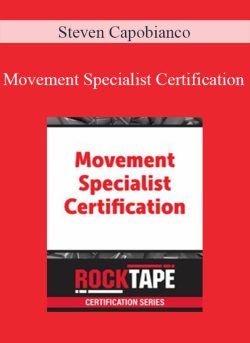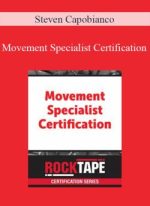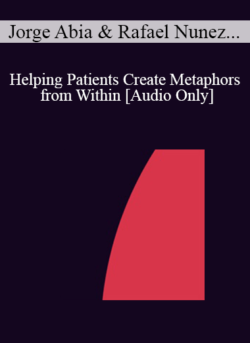.Steven Capobianco – Movement Specialist CertificationMovement Specialist Certification: Conscious MovementHuman movement involves the interplay between the person and their environment alongside the person and their ‘parts’ being able to meet their movement goals. The Movement Specialist Certification course will emphasize goal oriented movement assessments with an emphasis away from stereotypic standard movement screening practices. This course will introduce a new paradigm for understanding and enhancing how our patients and clients move using three systems of human movement; neurological (mapping), core control (midline) and mechanical (motor) systems. Movement Assessment Systems will be used to determine if the movement dysfunction is primarily a mechanical or neurological deficit and provide the appropriate corrective strategies to address the issue.A variety of interventional tools (mobility balls, exercise bands, foam rollers, compression flossing bands, kinesiology tape, agility and conditioning equipment) will be used to tackle an evidence-informed, brain-based approach to movement and functional rehabilitation programming. The use of digital motion analysis technology will be presented to demonstrate how health and fitness professionals can be more objective when assessing human movement.This certification is designed to help health and fitness professionals learn safe, simple, and effective tactics to assess ‘conscious’ movement. Attendees will learn multiple assessments along with intervention strategies of the fundamental movement of squatting.CourseMovement Specialist Certification 2 Hours 11 MinutesMovement Specialist Certification 1 Hour 38 MinutesMovement Specialist Certification 2 Hours 09 MinutesObjectivesIdentify the role of neuromuscular movement assessment.Assess conscious(cortical) and unconscious(cerebellar) proprioception testing for the patient/client as it relates to human movement.Compare and contrast the difference between mobility restrictions and neuro/somatic restrictions (Brain vs.Tissue).Integrate the “3 Movement Pillars” and how they relate to human movement control and performance (Brain (Neurological/Psychological), Midline, Mechanical).Evaluate movement assessment techniques to identify faulty motor patterns in fundamental movements (e.g.squatting).Critique and demonstrate proper use of compression floss bands, foam rollers, kinesiology tape (as a motor control tool) and mobility balls for movement limitations.Screen and develop movement with the use of exercise bands, agility and conditioning equipment as well as body weight correctives with appropriate progressions and regressions.Integrate the use of digital motion analysis to objectively capture human movement.OutlineMovement Specialist Certification: Conscious Movement3 Pillars to Human Movement Brain (Neurological/Psychological), Midline (Fascia), and Mechanical (Motor Movement)Conscious awareness (proprioception) as it relates to human movementMembers of the three movement zones:Ankle ComplexHip ComplexShoulder ComplexScreening concepts, and highlight evidence supporting selected screening approaches for the three movement zones of the body.Brain ScreenThreat Assessment (Psychological Readiness Questionnaire) to evaluated patient/client’s behavioral/motivational attachment to movement.Personality Screen to evaluate the person’s learning style to provide the coach or practitioner with the necessary information to best create behavior change.Evaluate Conscious Human GPS System – Conscious neurological assessment using 2-point discrimination testing to assess quality of body representation.Foot ComplexHip ComplexShoulder ComplexMidline Screen – Screen fascia’s contribution to planar movement function or dysfunction.Planar movement quality assessmentModified Bunkie TestFoot ComplexHip ComplexShoulder ComplexMechanical Screen – Static/Dynamic Human Movement ScreeningDifferences of mobility, motor control, and stability (Movement Pyramid)Joint by joint approach to identify mobility or stability limitations in movementBrain ScreenWorkshop Psychological Readiness Questionnaire to assess threat appraisal of the three movement zonesWorkshop The “True Colors Personality Screen” to assess the personality type of the individual as it relates to their “coachability”Perform evaluation of Conscious Human GPS System (2-point discrimination) to measure body representation of the three movement zonesMidline (Fascial) Screen Workshop Modified Bunkie TestProne PlankSupine PlankR + L Side PlankProne Plank – Feet Elevated (Shoulder Dominant)Prone Plank – Elbows Elevated (Hip/Ankle Dominant)3 Point Plank – Upper Body Emphasis (unilateral eval control Shoulder Complex)3 Point Plank- Lower Body Emphasis (unilateral eval control Hip Complex)Mechanical Screen Introduce and demonstrate the importance of a safe, effective and efficient screen of a fundamental movement pattern (Deep Body Weight Squat).Demonstrate and Practice Subjective Squat ScreeningFoot ComplexMobility (lacks ankle DF) (soft: foam roll/ball/floss) (joint: floss/ex bands)Stability (planar leak) (agility/conditioning equip or bands)Motor Control (balance issue or bilateral imbalance) (vibe/floss)Hip ComplexMobility (lacks flexion/pelvic tilt) (soft-bands, foam roller) (joint-banded mobes/floss)Stability (planar leak) (plank progressions/BW/RNT w bands)Motor Control (timing/awareness issue) spiky ball/vibration/pacinian upregulationShoulder ComplexMobility (lack of shoulder flexion with OH squat)Stability rib flareMotor Control (eliminate mobility and stability, then this is the culprit)Demonstrate and Practice Objective Squat Analysis – Digital Motion Analysis Technology demonstration and comparison.Use digital technology to evaluate joint mechanics and performance of squatFoot ComplexDorsiflexion/PlantarflexionHip ComplexFlexion of Hip, Flexion of TrunkShoulder ComplexFlexion with OH SquatSubjective vs objective analysis resultsImprove Squat Performance: Use data collected from Brain, Tissue and Mechanical Screens Demonstrate and practice corrective strategies to remediate identified dysfunctions of the three movement centersFoot Complex Interventions: Triage primary impairmentMobility Impairment, initiates mechanical interventionStability Impairment, initiates tissue interventionMotor Control Impairment, initiates brain interventionSelect appropriate tools mobility balls, exercise bands, foam rollers, compression flossing bands, kinesiology tape, agility and conditioning equipment Re-Screen Squat to assess changeUtilize results from the screen to intervene:Mobility InterventionMechanical problem needs mechanical solutionIf not Mechanical look to TissueMobility Tactics – Neurologic Foam Rolling, Targeted Compression Floss Bands, Vibration techniques.Stability InterventionTissue problem needs tissue solutionIf not Tissue, look to BrainStability Tactics – Exercise bands isolated exerciseIsotonic, Eccentric, Isometric use of exercise bandsUse of body weight plank progression/regressionsSagittal Plane (Anterior/Post Chains) – Prone Plank Progressions/RegressionsFrontal Plane (Lateral Chain)– Side Plank Progressions/RegressionsTransverse Plane (Functional/Helical Chains) – Upper/Lower Anti-Rotation Control Progression and RegressionsRe-Screen Squat to assess changeMotor Control InterventionBrain problem needs brain solutionIf not Mechanical or Tissue, Brain is only culprit leftMotor Control Tactics – Kinesiology Tape, Foam rollers, mobility balls, exercise bands and vibrationThreat Tactics- psych-social considerations, client/patient education, regressions of squat with equipment (chair), increased physical or psycho/social supportHip Complex Interventions: Triage primary impairmentMobility Impairment, initiates mechanical interventionStability Impairment, initiates tissue interventionMotor Control Impairment, initiates brain interventionSelect appropriate tools mobility balls, exercise bands, foam rollers, compression flossing bands, agility and conditioning equipment Perform tool-based intervention Re-Screen Squat to assess changeUtilize results from the screen to intervene:Mobility InterventionMechanical problem needs mechanical solutionIf not Mechanical look to TissueMobility Tactics – Neurologic Foam Rolling, Targeted Compression Floss Bands, VibrationStability InterventionTissue problem needs tissue solutionIf not Tissue, look to BrainStability Tactics – Exercise bands isolated exerciseIsotonic, Eccentric, Isometric use of exercise bandsUse of body weight plank progression/regressionsSagittal Plane (Anterior/Post Chains) – Prone Plank Progressions/RegressionsFrontal Plane (Lateral Chain)– Side Plank Progressions/RegressionsTransverse Plane (Functional/Helical Chains) – Upper/Lower Anti-Rotation Control Progression and RegressionsRe-Screen Squat to assess changeMotor Control InterventionBrain problem needs brain solutionIf not Mechanical or Tissue, Brain is only culprit leftMotor Control Tactics – Kinesiology Tape, Foam rollers, mobility balls, exercise bands and vibrationThreat Tactics- psych-social considerations, client/patient education, regressions of squat with equipment (chair), increased physical or psycho/social supportShoulder Complex Interventions: Triage primary impairmentMobility Impairment, initiates mechanical interventionStability Impairment, initiates tissue interventionMotor Control Impairment, initiates brain interventionSelect appropriate tools mobility balls, exercise bands, foam rollers, compression flossing bands, agility and conditioning equipment Perform tool-based intervention Re-Screen Squat to assess changeUtilize results from the screen to intervene:Mobility InterventionMechanical problem needs mechanical solutionIf not Mechanical look to TissueMobility Tactics – Neurologic Foam Rolling, Targeted Compression Floss Bands, VibrationStability InterventionTissue problem needs tissue solutionIf not Tissue, look to BrainStability Tactics – Exercise bands isolated exerciseIsotonic, Eccentric, Isometric use of exercise bandsUse of body weight plank progression/regressionsSagittal Plane (Anterior/Post Chains) – Prone Plank Progressions/RegressionsFrontal Plane (Lateral Chain)– Side Plank Progressions/RegressionsTransverse Plane (Functional/Helical Chains) – Upper/Lower Anti-Rotation Control Progression and RegressionsRe-Screen Squat to assess changeMotor Control InterventionBrain problem needs brain solutionIf not Mechanical or Tissue, Brain is only culprit leftMotor Control Tactics – Kinesiology Tape, Foam rollers, mobility balls, exercise bands and vibrationThreat Tactics- psych-social considerations, client/patient education, regressions of squat with equipment (elastic band), increased physical or psycho/social supportSpeakerSteven Capobianco, DC, MA, DACRB, PESRelated seminars and productsDr. Capobianco holds a BA and MA in Kinesiology and Exercise Science in addition to a doctorate in Chiropractic Medicine. Steve is a practicing sports chiropractor, currently holding a Diplomate in Rehab from the ACA and a Performance Enhancement Specialists certification from the NASM. Dr. Capobianco launched a sports-specific rehab and performance institute called ProjectMOVE in Denver, Colorado that focuses on identifying motor control dysfunction in an attempt to enhance human performance from the professional athlete to weekend warrior. Steve is an avid athlete with a passion for sports. He has spent 25 years competing in ice hockey, lacrosse, triathlons, adventure racing, and natural bodybuilding. Steve is the Senior Director of Medical Education for Rocktape, pioneering evidence-informed education and products that challenge the current understanding of human movement practices. He authored the Fascial Movement Taping manual and lectures worldwide on the movement-based corrective tactics and strategies.Speaker Disclosure: Financial: Steve Capobianco is the medical director at Rock Tape, Inc. He is the owner of Project Move. He is an adjunct instructor at Palmer College of Chiropractic West. Dr. Capobianco receives a speaking honorarium from PESI, Inc. Non-financial: Steve Capobianco has no relevant non-financial relationship to disclose.Salepage: https://catalog.pesi.com/item/movement-specialist-certification-65123 Archive: https://archive.fo/wip/O3QNCDelivery Method– After your purchase, you’ll see a View your orders link which goes to the Downloads page. Here, you can download all the files associated with your order. – Downloads are available once your payment is confirmed, we’ll also send you a download notification email separate from any transaction notification emails you receive from Forimc.me. – Since it is a digital copy, our suggestion is to download and save it to your hard drive. In case the link is broken for any reason, please contact us and we will resend the new download link. – If you cannot find the download link, please don’t worry about that. We will update and notify you as soon as possible at 8:00 AM – 8:00 PM (UTC+8).Thank You For Shopping With Us! Reviews There are no reviews yet.Be the first to review “Steven Capobianco – Movement Specialist Certification” Cancel replyYour rating *Rate…PerfectGoodAverageNot that badVery poorYour review *Name *Email *Δ
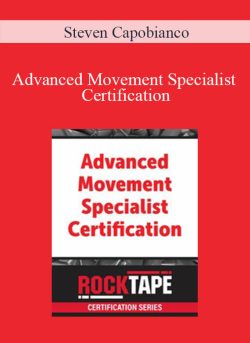 Steven Capobianco – Advanced Movement Specialist Certification
₹8,798.00
Steven Capobianco – Advanced Movement Specialist Certification
₹8,798.00
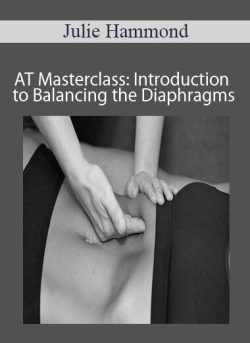 Julie Hammond – AT Masterclass: Introduction to Balancing the Diaphragms
₹3,818.00
Julie Hammond – AT Masterclass: Introduction to Balancing the Diaphragms
₹3,818.00
Steven Capobianco – Movement Specialist Certification
₹8,798.00

